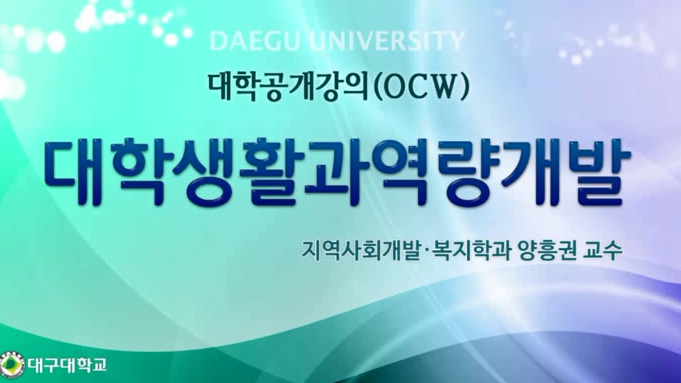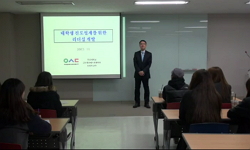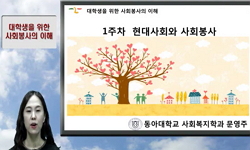Purpose - The aim of this study is to explore the effectiveness in educational differences between students of the government's financialfunded groups and the non-financial-funded groups at a university in Korea. Research design, data, and methodolo...
http://chineseinput.net/에서 pinyin(병음)방식으로 중국어를 변환할 수 있습니다.
변환된 중국어를 복사하여 사용하시면 됩니다.
- 中文 을 입력하시려면 zhongwen을 입력하시고 space를누르시면됩니다.
- 北京 을 입력하시려면 beijing을 입력하시고 space를 누르시면 됩니다.

Effectiveness of Learning Performances According to Financial Motivation of University Students
한글로보기https://www.riss.kr/link?id=A106314003
-
저자
Young-Sool PARK (가톨릭관동대학교) ; Lee-Seung KWON (Catholic Kwandong University) ; Eun-Mee CHOI (Catholic Kwandong University)

- 발행기관
- 학술지명
- 권호사항
-
발행연도
2019
-
작성언어
English
- 주제어
-
등재정보
KCI등재
-
자료형태
학술저널
-
수록면
27-38(12쪽)
- 제공처
-
0
상세조회 -
0
다운로드
부가정보
다국어 초록 (Multilingual Abstract)
Research design, data, and methodology - The study was conducted using a survey tool of National Assessment for Student Engagement in Learning. In total, 334 participants were surveyed, of which 290 students were participants in economic support program and 44 were nonattendance program students. The general characteristics of all of the participants were investigated by frequency analysis. The analysis of participants’ collective characteristics used independent t and f-test, and one-way ANOVA with IBM SPSS Statistics package program 22.0.
Results - The number of participating students is higher than that of non-participating students in relation to in-activities of university immersion, but the number of participating students is lower than that of non-participating students in relation to in-quality of student support. However, there was no statistical significance. The confidence coefficient of the university-immersion and student support questionnaire is 0.860 and 0.913, respectively.
Conclusions - There is no significant difference in the activities of university immersion and student support between students who participate in the economic support program and those who do not.
Purpose - The aim of this study is to explore the effectiveness in educational differences between students of the government's financialfunded groups and the non-financial-funded groups at a university in Korea.
Research design, data, and methodology - The study was conducted using a survey tool of National Assessment for Student Engagement in Learning. In total, 334 participants were surveyed, of which 290 students were participants in economic support program and 44 were nonattendance program students. The general characteristics of all of the participants were investigated by frequency analysis. The analysis of participants’ collective characteristics used independent t and f-test, and one-way ANOVA with IBM SPSS Statistics package program 22.0.
Results - The number of participating students is higher than that of non-participating students in relation to in-activities of university immersion, but the number of participating students is lower than that of non-participating students in relation to in-quality of student support. However, there was no statistical significance. The confidence coefficient of the university-immersion and student support questionnaire is 0.860 and 0.913, respectively.
Conclusions - There is no significant difference in the activities of university immersion and student support between students who participate in the economic support program and those who do not.
목차 (Table of Contents)
- Abstract
- 1. Introduction and Theoretical Background
- 1.1. Introduction
- 1.2. Theoretical Background
- 2. Research Method
- Abstract
- 1. Introduction and Theoretical Background
- 1.1. Introduction
- 1.2. Theoretical Background
- 2. Research Method
- 2.1. Survey Target and Period
- 2.2. Key Survey Contents and Questionnaires
- 2.3. NASEL as a Research Tool for "StrategicExploration of University Teaching andLearning Quality"
- 2.4. Research Design and Statistical AnalysisMethod
- 3. Research Result
- 3.1. NASEL Participant Status and GeneralCharacteristics
- 3.2. Status of the study on the quality of studentsupport and the activities of universityentrance for the entire survey
- 3.3. The Characteristics of the Overall SurveyParticipants' Group-Specific Activities inUniversities
- 3.4. Difference in Quality of Student Support andUniversity Immersion by Grade of StudentsWho Participate in Specialization
- 3.5. The Differences of University Immersion andStudent Support by Students inSpecialization
- 4. Discussion and Conclusion
- 4.1. Discussion
- 4.2. Conclusion
- 5. Limitations of research
- References
동일학술지(권/호) 다른 논문
-
The Effect of Brand Trust of Home Meal Replacement on Repurchasing in Online Shopping
- 한국유통과학회
- Seong-Soo CHA
- 2019
- KCI등재
-
- 한국유통과학회
- Zaure K. CHULANOVA
- 2019
- KCI등재
-
Is Expansionary Fiscal and Monetary Policy Effective in Australia?
- 한국유통과학회
- Yu HSING
- 2019
- KCI등재




 ScienceON
ScienceON 스콜라
스콜라






